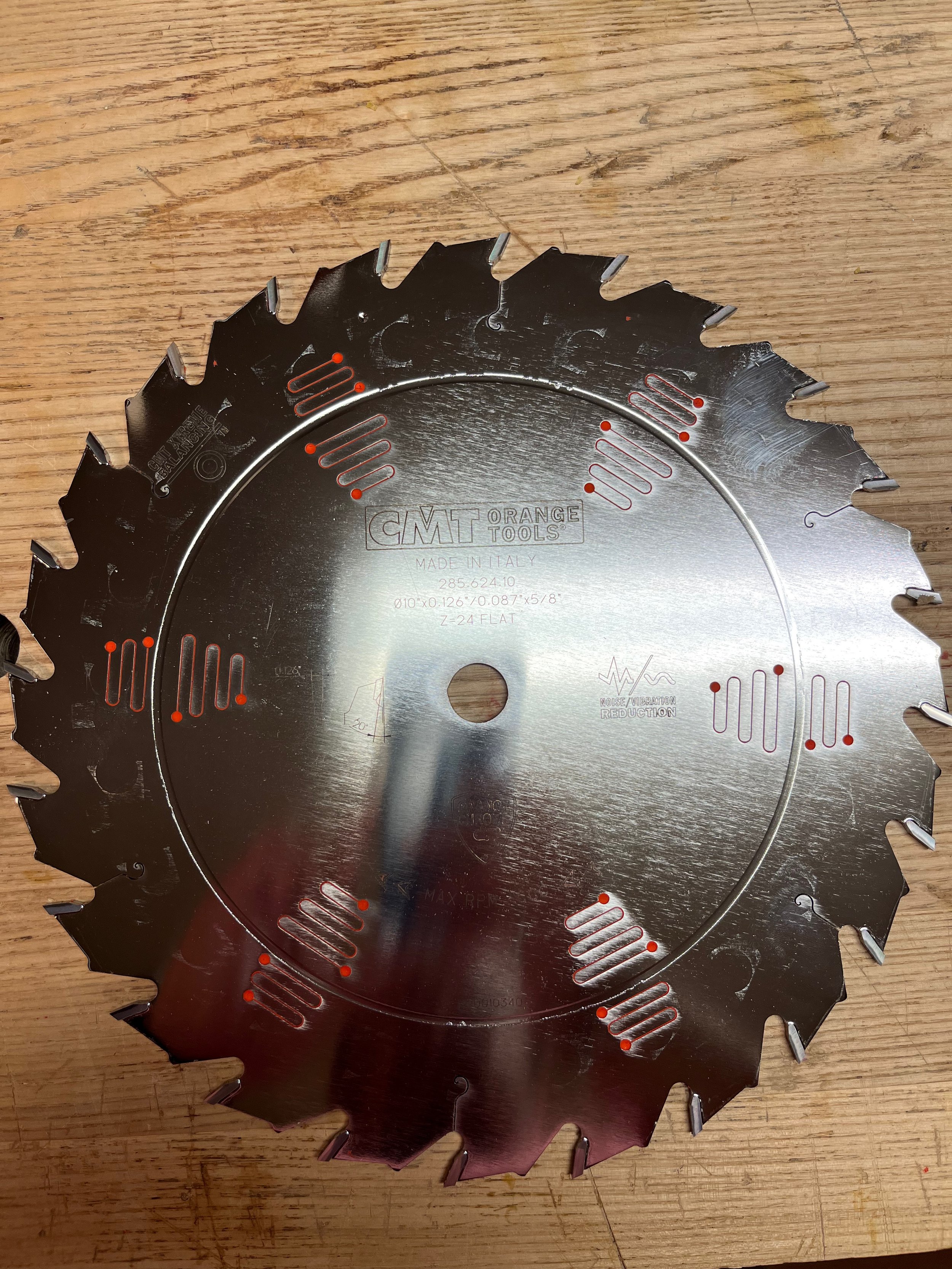On the bench - Table saw blade selection
Video on choosing saw blades for the new table saw.
So I got a new shinny cabinet table saw.
Yes it is a SawStop and I made the purchase for both the safety aspects that comes with the brand but regardless of this aspect, it is a great saw. Is it perfect, nope. Like many others, there are a few things that I would of liked to be a little better.
But all in all, I am very pleased with the construction of the saw.
But one thing that can definitely be changed and pretty easily in the process, is the stock blade. The PCS model of the saw stop comes with a pretty basic blade. It gets you going if you don’t have any other blades, which was my case. At least I could start using the saw even though I did not have any other blades.
On the short list of things I wanted to change, was exactly that, the stock blade that came with the saw.
But which blade
At first, I was still somewhat debating the “single” blade combo versus rip and crosscut separate blades. When I did have a descent table saw in a not so distant time, I did get separate blades, one for rip, one for crosscut. They were not premium blades, but they did the job.
I finally decided to go with separate blades and go through the hassle of changing blades depending of the operation that needs to be done. A bit of planification will certainly help here, but pretty sure I will see some occasion where “just this cut”, where the wrong blade will be in the saw.
The offering now
So ok, I decided to go with separates, but what brand now ! and what kind of configuration for each the rip and crosscut.
Here comes the paralysis by analysis portion of the story ! I knew that I wanted to get pretty good blades. Potentially something better than what can be found in the big box store. And that would not break too much the bank.
One aspect also that I did not know when buying the Saw Stop saw is the configuration of the blade, where blades with depth-limiting shoulders to may take longer to stop then regular blades. See this article from the Saw Stop web site. So trying to avoid these types of blades might be a good thing….
All the big names came up in list of different reviews and articles and one caught my eyes as being a brand that offered different “grades” of blades for different market. CMT came up as a brand that have pretty good blades at pretty good prices. They are also manufacture router bits, shaper cutters and other types of cutters.
The Choice - Separate ripping and crosscut blade
The CMT blades came highly recommended by a few people on the internets, and was able to view some comparaison with other similar manufacturers blades. I was pretty impressed on the results that the people got from the blades and decided to take the leap of faith as I do not have a close by dealer of CMT products that I could see the blades them self in person.
I went with their industrial line of product, full kerf blades. After receiving the respective blades, I was pretty impressed with the size of the carbide tooth. I am no expert in saw blade sharpening, but those are pretty hefty pieces of carbide on either blade.
Notes
As for adding a general purpose or combo blade, not sure yet if this model is a necessity for the time being. Will see how things goes when using the 2 blades described here. One strategy I heard going around is a general purpose blade for most day to day operation, rip/cross cut for the obvious when lots is to be done for either operation.
I know that many people keep the cross-cut blade for “special” occasion, keeping it the sharpest of the bunch to minimise the potential tear-out. The intention here is to use it properly, when cross-cut is required, where plywood or veneer finish product are to be used and the tooth count matters for the best finish cut.
I guess time will tell eventually how many blades will be in the collection.
Pictures
The ripping blade is a 24 tooth, flat ground tooth, 10” in diameter
CMT Ripping blade packaging
CMT Ripping blade - 24 tooth geometry
For the crosscut model, it is their 60 tooth, ATB, Heavy duty crosscutting blade. It is also a 10” model
CMT Crosscut Blade outer packaging
CMT Crosscut blade - 60 tooth geometry
Some reference that helped :
A Comprehensive Guide to Table Saw Blades with 60,000 FPS Slow Mo - Youtube - Jonathan Katz Moses
Beginner Woodworker Tips on Buying the Right Saw Blades - Youtube - 731 Woodworks
Best Saw Blades for Woodworking on a Budget - Youtube - 731 Woodworks




